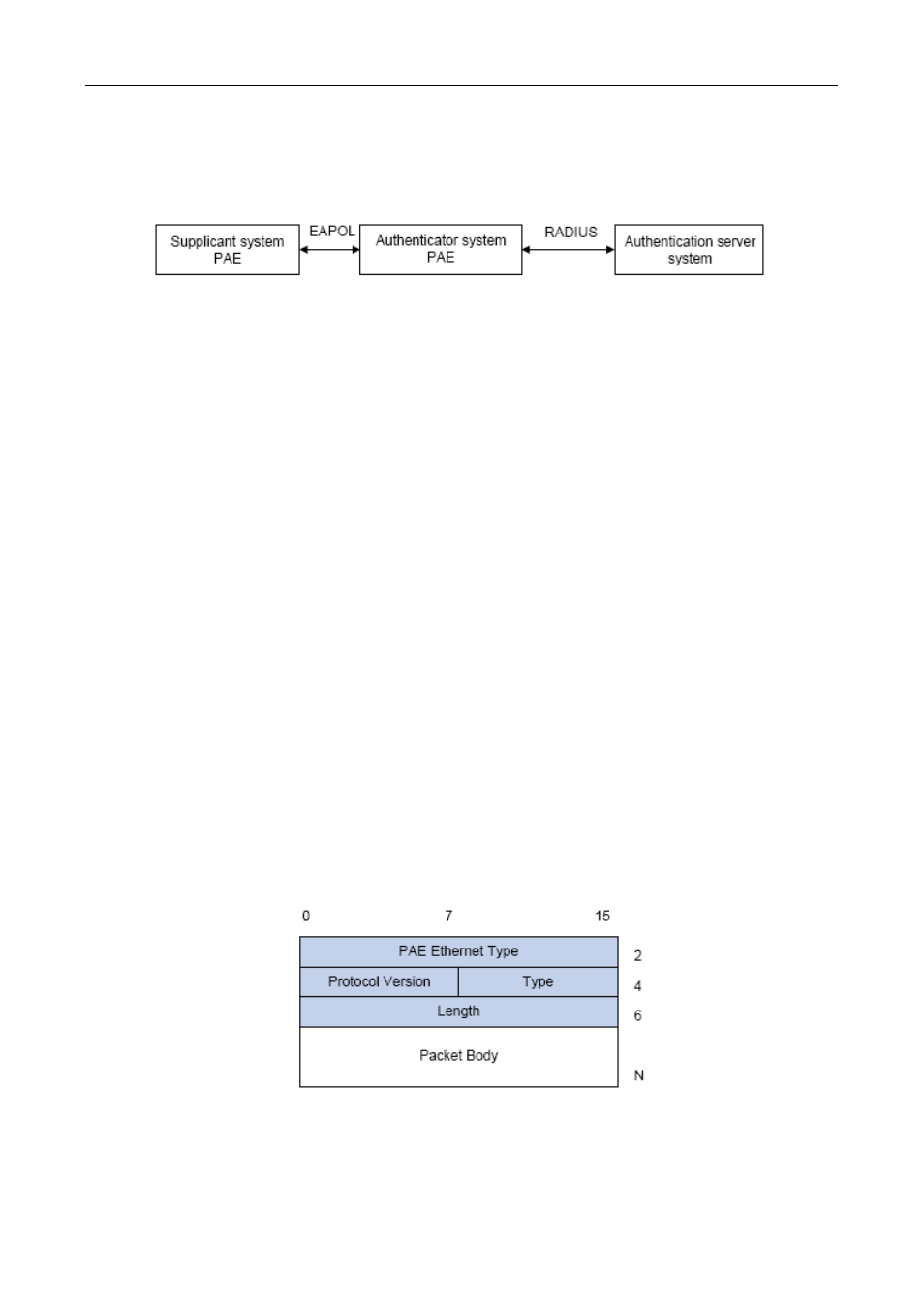2 the work mechanism of 802.1x, 3 the encapsulation of eapol messages – PLANET WGSW-50040 User Manual
Page 197

25-3
25.1.2 The Work Mechanism of 802.1x
IEEE 802.1x authentication system uses EAP (Extensible Authentication Protocol) to implement exchange of
authentication information between the supplicant system, authenticator system and authentication server
system.
Figure
25-2 the Work Mechanism of 802.1x
EAP messages adopt EAPOL encapsulation format between the PAE of the supplicant system and
the PAE of the authenticator system in the environment of LAN.
Between the PAE of the authenticator system and the RADIUS server, there are two methods to
exchange information: one method is that EAP messages adopt EAPOR (EAP over RADIUS)
encapsulation format in RADIUS protocol; the other is that EAP messages terminate with the PAE
of the authenticator system, and adopt the messages containing RAP (Password Authentication
Protocol) or CHAP (Challenge Handshake Authentication Protocol) attributes to do the
authentication interaction with the RADIUS server.
When the user pass the authentication, the authentication server system will send the relative
information of the user to authenticator system, the PAE of the authenticator system will decide the
authenticated/unauthenticated status of the controlled port according to the authentication result of
the RADIUS server.
25.1.3 The Encapsulation of EAPOL Messages
1. The Format of EAPOL Data Packets
EAPOL is a kind of message encapsulation format defined in 802.1x protocol, and is mainly used to transmit
EAP messages between the supplicant system and the authenticator system in order to allow the
transmission of EAP messages through the LAN. In IEEE 802/Ethernet LAN environment, the format of
EAPOL packet is illustrated in the next figure. The beginning of the EAPOL packet is the Type/Length domain
in MAC frames.
Figure
25-3 the Format of EAPOL Data Packet